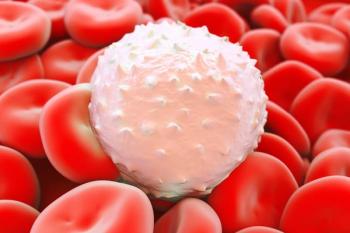
Multiple Myeloma: Role of Bispecifics in an Evolving Treatment Landscape
Episodes in this series

Transcript:
Ajai Chari, MD: Thank you for joining us for this Cancer Network® Training Academy session titled “Step-up Dosing and Monitoring for CRS and ICANS in Patients with Multiple Myeloma Treated With Bispecifics.” My name is Ajai Chari. I’m a professor of medicine and the director of clinical research at the myeloma program at Icahn School of Medicine at Mount Sinai in New York [New York]. I’m joined by a health care team that’s truly outstanding, and we’re looking forward to an interactive discussion about the management of patients with myeloma getting treated with bispecifics. I’d like to welcome my fellow panelists and have them introduce themselves, starting with Annel Urena.
Annel Urena, RN: Hi, my name is Annel Urena. I’m 1 of the clinical research nurses for multiple myeloma research trials at Mount Sinai Hospital.
Kiah Purcell, NP: Hi, I’m Kiah Purcell. I’m also a nurse practitioner working with clinical trials in the multiple myeloma program at Mount Sinai Hospital.
Robert Mancini, PharmD, BCOP: Hi, my name is Robert Mancini. I’m the BMT [bone marrow transplant] and hematologic malignancies pharmacy program coordinator at St. Luke’s Cancer Institute in Boise, Idaho.
Ajai Chari, MD: Thank you all for joining me. In today’s program, we are going to discuss priming with bispecifics in patients with multiple myeloma. We’ll also review some patient cases to illustrate cytokine release syndrome and ICANS [immune effector cell-associated neurotoxicity syndrome] and how they’re diagnosed, and we’ll share insights on how we monitor and manage these adverse events in clinical practice. Let’s get started.
First, for those who may not be seeing myeloma as much as those of us on this panel, it’s an important disease, and the prognosis has improved dramatically. It’s the second most common blood cancer, and it tends to present in ages 60s and 70s, but our youngest patient at Sinai was diagnosed at 18, and our oldest is over 100. It’s a very heterogeneous population, with a slightly increased prevalence in African Americans. We don’t see strong family history, although population studies suggest there’s a 2- to 3-fold increase relative risk if somebody has myeloma for first-degree relative having a related B-cell malignancy. Myeloma is typically diagnosed by the CRAB symptoms—hypercalcemia, renal failure, anemia, and bone disease—and it sometimes has recurrent infections.
What’s exciting is the continued increase in therapeutic options for these patients. When I started fellowships, we had steroids and conventional chemotherapies, and the first image was just coming out. Now we have multiple immunomodulatory agents, multiple proteasome inhibitors, XPO1 inhibitor, and a burgeoning class of immunotherapeutics, which includes naked antibodies and now bispecifics, antibody-drug conjugates, and of course CAR [chimeric antigen receptor] T cells. We have a lot of options. We’ll hear today from [physicians] who’ve been treating patients with bispecific nonclinical trials but also standard of care. What’s remarkable is that historically, to get a new drug approved in an unmet need, which is patients who’ve exhausted all their drugs, the response rate was 20% to 30% with a PFS [progression-free survival] of 3 to 4 months. That was considered the benchmark for an accelerated approval.
With T-cell redirection therapy, we’re seeing 60% to 100% response rates and PFS of 9 months and up. For some members of our clinical team who have not treated with bispecifics, it looks like magic. Every patient seems to be responding, and it’s gratifying to see heavily treated patients have tremendous benefit.
With new therapies comes a lot of new educational efforts to make sure we’re able to deliver these therapies safely to all the patients and in all locations. One true benefit of bispecifics is that they’re off the shelf and ready to go, and don’t require specialized administration that CAR Ts do. The flip side is that most bispecifics to date in clinical trials have been done at academic centers where they have had CAR T experience, so they know about CRS, ICANS, and high-grade toxicity. It’s not just the physicians. In some ways, physicians are the least important here. It’s the rest of the health care team: the nursing team, the pharmacy, the ER [emergency department]. We’re going to walk through the entire health system’s approach to treating patients with bispecifics, focusing on CRS and ICANS.
Transcript edited for clarity.
Newsletter
Stay up to date on recent advances in the multidisciplinary approach to cancer.



















































































